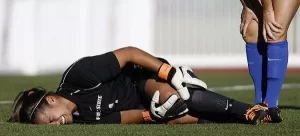When athletes are returning to sport following an Anterior Cruciate Ligament Reconstruction (ACLR) it is imperative that Strength Coaches follow a structured and systemised approach.
The Melbourne ACL Return to Sport 2.0 offers a comprehensive protocol to allow Strength Coaches to progressively load a returning athlete and ensure they achieve the necessary performance indicators to enable an athlete to return successfully.
Below is an explanation of an important first stage an athlete needs to work through on their ACL Rehabilitation journey. This is a stage that has generated more momentum with continued research and positive outcomes for returning athletes.
Pre-Operative Phase
Many athletes will want to have their surgery as quickly as possible, but it is important that the knee has settled from the injury. Remembering that each ACL should be taken on a case-by case approach as they will have similarities of injury, but mechanism, movement and initial recovery will differ between athletes.
The 3 most important goals of this phase are to
- Eliminate Swelling within the knee
- Regain full range of motion (ROM) within the injured joint
- Regain 90% strength in both quadricep and hamstring when compared to the non-injured side.
Recent research has suggested that people who attain full range of motion, good quadriceps and hamstring strength, and minimal swelling prior to surgery have better outcomes than those who don’t up to 2 years post-surgery.
Strength training should be included in this phase remembering it should be graduated. Beginning with body weight movements and building into loaded movements. Each program should be individualised to the athlete (i.e., their training history, the mechanism of injury, injury to structures within the knee) and be guided by Physiotherapists working in a collaborative approach.
It is important that aggressive change of direction be avoided within this stage, but athletes are able to build into completing bilateral and unilateral jumping and hopping drills.
Within this important phase, Coaches are able to gather the necessary information above to determine an athlete’s readiness to return to training and sport with the timeframe for achieving these 3 outcome measures varying between athletes and can be dictated by surgeon availability to perform the reconstruction.
These early-stage performance indicators allow a Coach to see how an athlete is progressing following their surgery.




